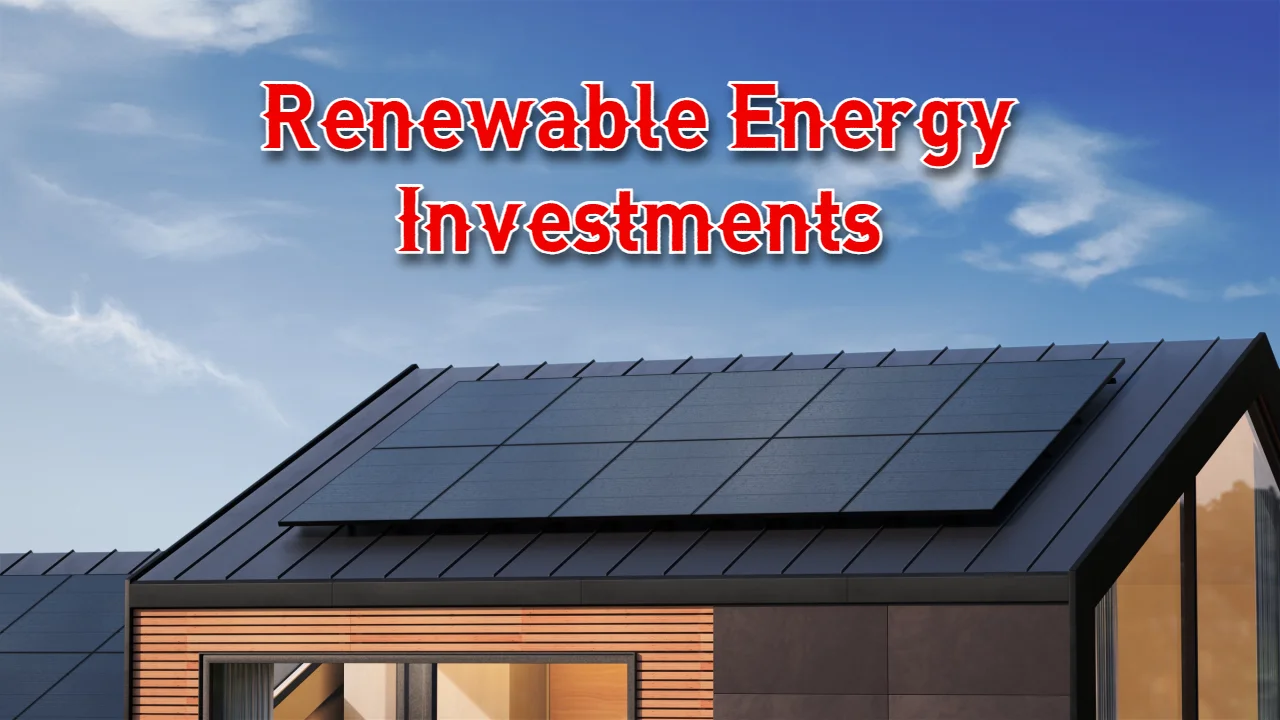Unlocking Growth The Case for Renewable Energy Investments
Renewable energy investments involve allocating financial resources into projects, companies, and technologies that harness power from sustainable sources like solar, wind, hydropower, biomass, geothermal, and ocean energy. These investments play a crucial role in promoting clean energy solutions, reducing reliance on fossil fuels, mitigating climate change impacts, and fostering economic growth in the renewable energy sector.

Types of Renewable Energy Investments
Solar Energy
-
- Photovoltaic (PV) Systems: Convert sunlight directly into electricity.
- Concentrated Solar Power (CSP): Use mirrors/lenses to focus sunlight for heat, enabling electricity generation.
Wind Energy
-
- Onshore Wind Farms: Utilize land-based wind turbines for electricity production.
- Offshore Wind Farms: Located in oceans with higher wind speeds, offering greater electricity generation potential.
Hydropower
-
- Large-Scale Hydroelectric Dams: Use reservoir-stored water for electricity.
- Small-Scale Hydroelectric Plants: Divert river flow through turbines for local energy needs.
- Pumped Storage Facilities: Store and release water to manage electricity demand.
Biomass and Bioenergy
-
- Solid Biomass: Burn wood/agricultural residues for heat/electricity.
- Biogas: Generate gas from organic waste for energy use.
- Biofuels: Convert biomass into fuels like ethanol/biodiesel for transportation.
Geothermal Energy
-
- Geothermal Power Plants: Extract Earth’s heat via wells for electricity.
- Geothermal Heat Pumps: Use ground heat for building heating/cooling.
Ocean Energy
-
- Tidal Power: Harness tidal movements for consistent electricity generation.
- Wave Power: Capture wave energy using specialized converters.
Factors Influencing Renewable Energy Investments
- Government Policies: Support via feed-in tariffs, renewable portfolio standards, and tax credits/subsidies.
- Technological Advancements: Improved efficiency and energy storage solutions.
- Environmental and Social Considerations: Addressing climate change, enhancing energy security, and creating local jobs.
- Market Forces: Declining technology costs and increasing demand for clean energy.
Pros and Cons in Renewable Energy Investments
- Pros: Mitigating climate impacts, reducing energy costs long-term, and supporting sustainable development.
- Cons: Regulatory uncertainties, grid integration challenges, intermittency issues, environmental impacts, and market competition.
Renewable energy investments not only contribute to global sustainability goals but also offer diverse opportunities for investors to support innovative technologies and drive economic growth in the renewable energy sector.
Strategies for Successful Renewable Energy Investments
Diversification of Investment Portfolio
Diversifying investments across a range of renewable energy projects and technologies is crucial for mitigating risks associated with individual projects and market fluctuations. This approach not only spreads risk but also enhances the potential for higher returns by capturing opportunities in various sectors of the renewable energy market.
Focus on Long-Term Growth Potential
Renewable energy investments typically require a long-term perspective due to the extended development timelines and the gradual realization of returns. Investors should prioritize projects and technologies with strong long-term growth potential, rather than focusing solely on short-term gains. This strategic approach aligns with the sustainable nature of renewable energy projects, which often yield substantial returns over their operational lifetimes.
Active Involvement in Project Development
Actively participating in the development stages of renewable energy projects—from initial planning through to construction and operation—can significantly enhance investment success. By engaging proactively, investors can ensure that projects are well-managed, aligned with their financial and sustainability goals, and efficiently executed. This involvement also allows investors to mitigate risks by closely monitoring project milestones and addressing challenges in a timely manner.
Collaboration with Local Communities and Stakeholders
Successful renewable energy investments often hinge on positive relationships with local communities and stakeholders. Collaborating closely with these groups helps address social and environmental concerns, enhances project credibility, and fosters long-term support. By actively listening to community feedback and incorporating local perspectives into project planning, investors can improve project acceptance and sustainability while mitigating potential opposition.
Adoption of Innovative Financing Models
Exploring innovative financing models, such as public-private partnerships, community-based financing, or crowdfunding, can diversify funding sources and attract additional investment. These models not only reduce financial risks for investors but also broaden access to capital for renewable energy projects. By tailoring financing structures to project-specific needs and regulatory environments, investors can optimize financial returns and contribute to the scalability of renewable energy solutions.
Case Studies of Successful Renewable Energy Investments
Examples of Successful Projects and Companies
Studying successful case studies provides valuable insights into effective strategies and best practices in renewable energy investments. Examples include projects that have overcome regulatory hurdles, achieved operational excellence, and demonstrated positive environmental and economic impacts. By analyzing these cases, investors can learn from past successes and apply proven methodologies to future investments.
Lessons Learned and Best Practices
Analyzing case studies allows investors to identify key lessons learned and best practices applicable to their investment strategies. These insights encompass risk mitigation strategies, stakeholder engagement approaches, technological innovations, and financial structuring techniques. By leveraging these best practices, investors can enhance the profitability, sustainability, and societal impact of their renewable energy portfolios.
Conclusion
Renewable energy investments are pivotal in accelerating the global transition toward clean, sustainable energy sources. As demand for clean energy continues to grow, supported by technological advancements and favorable regulatory frameworks, the renewable energy sector offers substantial opportunities for attractive returns and long-term growth.
Investors who adopt strategic approaches—such as portfolio diversification, long-term focus, active project involvement, community collaboration, and innovative financing—can effectively navigate the complexities of the renewable energy market. By learning from successful case studies and implementing best practices, investors can contribute to building a greener, more sustainable future while achieving financial prosperity in the evolving energy landscape.
